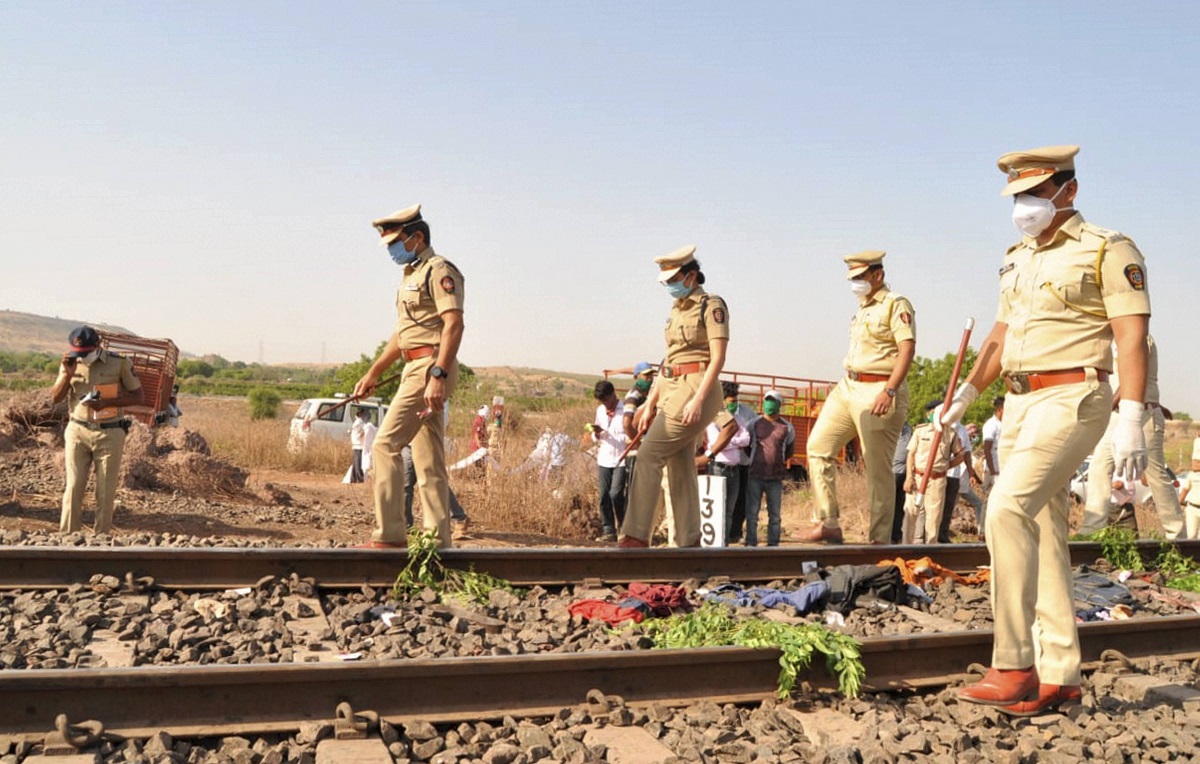Floods Or COVID-19, India's 'Invisible' Migrant Workers Pay the Highest Price
May 8, 2020: Twenty migrant labourers were trekking home along a railway track between Jalna and Aurangabad in Maharashtra during the COVID-19 lockdown. Having walked 40 km, at 3.30 am they chose to rest on the railway track, assuming no trains were running. Their destinations were far away, Umaria and Shahdol districts in Madhya Pradesh. Soon after they slept off, 16 of them were run over and killed by a goods train.
Not much later, in September 2020, in reply to a question in parliament, the Union labour ministry stated that it had maintained no data or record of any migrant worker deaths during the lockdown, and so the question of providing relief to the surviving families “does not arise”.
It was absurd and tragic.
The images of the workers' chapattis, clothes and other personal items strewn on the railway tracks became the only ‘record’ that those 16 deaths did occur.

Police at the site where migrant labourers making there way home during the lockdown were mowed down by a train. Photo: PTI
Fast forward to July 2023: Thousands of migrant workers living in shanty colonies on the banks of the Yamuna in Delhi are homeless. Flowing way above its 'danger mark' for days, the Yamuna has again submerged their homes. Thanks to climate change, this monsoon deluge is now more destructive.
Since 1978, the Yamuna has crossed the 207 metre mark three times, all in the last 10 years – 2013, 2019 and 2023.
Each time, the worst hit are Delhi’s migrant workers.
